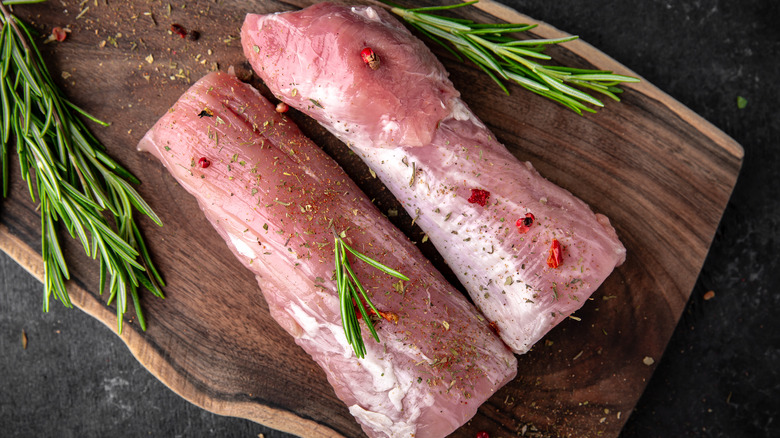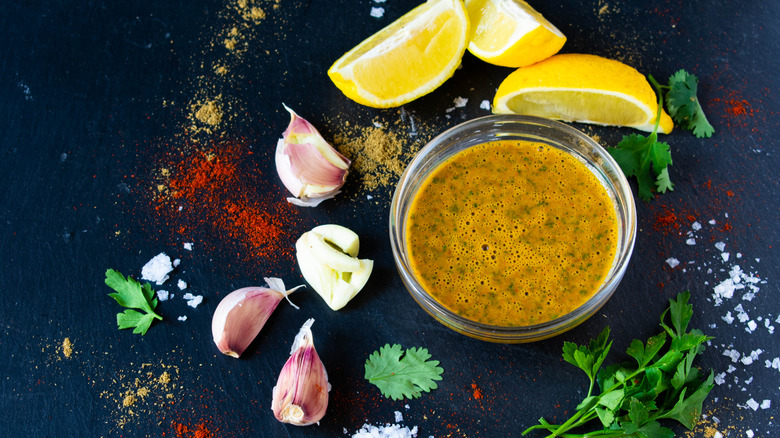What You Need To Know Before Seasoning Pork Loin
Described by the Kitchn as one of the most popular pork cut choices, there are plenty of reasons to love pork loin. Immensely versatile, pork loin is great cooked low and slow, roasted with a mustard glaze, and even smoked and layered in tacos with bold ingredients like pineapple and red onion. The cut of meat can take on a variety of different flavor profiles and — if treated right — is able to create a luxurious, high-quality meal without breaking the bank.
This cut of meat comes from the loin of the pig (hence the name), which MasterClass explains doesn't get much exercise, leaving it relatively tender. While not quite as soft as pork tenderloin, the loin cut is typically a heck of a lot bigger and cheaper by the pound.
Learn how to season and cook pork loin like a pro, and you'll have a stellar main to enjoy at your next dinner party ... or all by yourself.
Understand the flavor profile and method
There are countless options when it comes to seasoning a pork loin. Different seasoning blends and how you apply them will alter the end result, so whether you stick to a recipe or get creative with your own seasoning mix, know what you're getting into.
For a simple seasoning intended to let the flavor of your pork loin shine, Seasoning Ideas suggests just salting your pork loin. If you're feeling more adventurous, though, there are a variety of different flavor profiles you can create, like marinating with soy sauce, sesame oil, and other Chinese-inspired ingredients. Another option is making a marinade with honey and garlic if you're looking for a sweeter flavor profile in your finished dish. However you choose to season your meat, try choosing flavors that work together — and work with your side dishes — for best results.
For tender, tasty pork loin, a marinade can be a great tool to season and soften the meat. Culinary scientist Jessica Gavin explains this method can add moisture, break down proteins, and, through osmosis, allow the seasoning to penetrate the meat deeply. One downside to marinades is they often require the meat to be turned or flipped, FN Sharp explains. Using a dry rub (which is simply a dry seasoning blend) instead can evenly distribute the flavors without requiring any additional work, making it a better option if you aren't able to check on your pork loin as it rests.
Don't rush your pork loin
Pork loin doesn't exactly lend itself to a spur-of-the-moment meal. Obviously an overnight marinade will take more than a few hours, but even a dry rub will take some time to season the meat. To impart the most flavor into your pork loin, the Kitchn recommends 30 minutes of resting time at the very least after seasoning. If you do happen to plan your meal in advance, however, an overnight sit in a marinade or dry rub will allow the flavor to work its way into the meat much further than a quick preparation. The longer you allow your pork loin to sit with the seasoning, the more bold its flavor will be.
Your seasonings should all be added to your pork loin at the same time, reports Seasoning Ideas. To ensure you don't forget a key piece of your flavor profile, consider prepping all your dry rub or marinade ingredients before you start seasoning.


